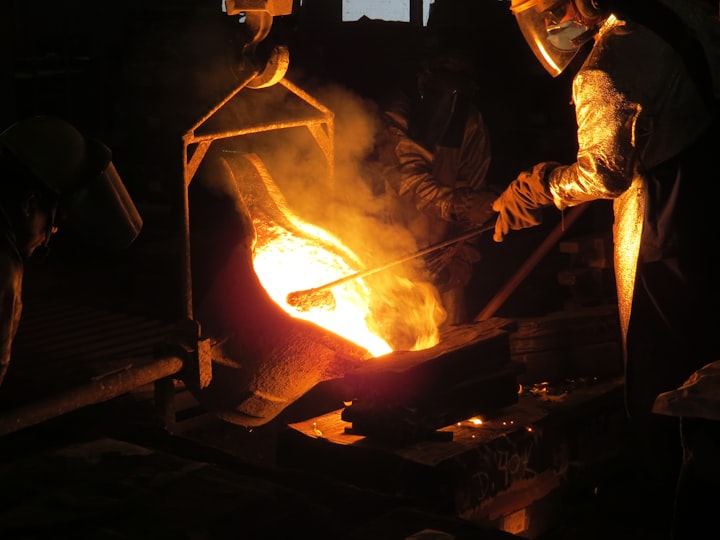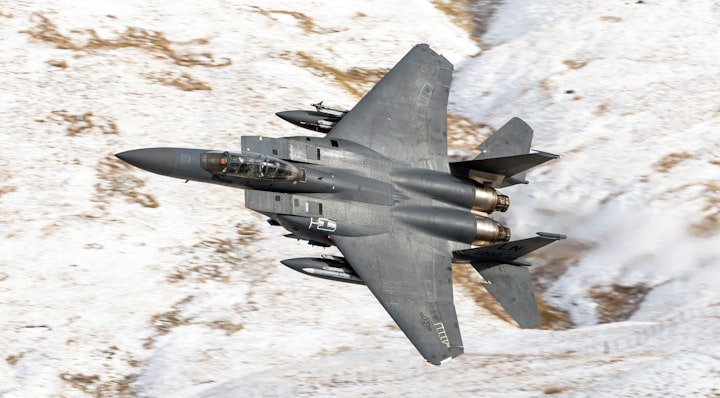Steeling Against and Forging Ahead
Casting Tragedy into Resilience and Fortitude

For this writer, the time since writing last year’s The Important Things has been rough, for a multitude of reasons that won’t be delved into here. A large part of that was spent staring at the floor, evaluating next steps, and, many days, coming to weak, if any, conclusions.
While that era is, thankfully, largely bygone, conveniently my annual reminder to check one’s self before one wrecks one’s self is once again here; the anniversary of my brother, SGT Steven C. Ganczewski, giving his life outside of Balad, Iraq, on 16 November, 2007 while deployed with A Co, 3rd Battalion, 75th Ranger Regiment.
In years past, I’ve provided a seminar of sorts to those fortunate or unfortunate enough to be stationed alongside me based on things I’ve gained and thoughts I’ve contemplated in light of Steve’s passing. As I progress through the ranks, opportunities to share it become more difficult, and thusly, before engaging with the next professional challenge, I have decided to pause and present such thoughts here.
Resiliency and Toughness
After recently describing the events of my senior year of High School to a newer friend, they remarked that at least it made me “resilient.”
The concept of “resiliency” is one thrown around often in today’s modern-day, mental illness-ridden, stress-encumbered and overstimulated society, and perhaps even moreso within the Department of Defense. During the decade-plus I’ve been in the Air Force, the Department of the Air Force has even gone as far as to establish a One-Star General-led Integrated Resilience Directorate toward the same, including a “Master Resiliency Trainer” program to embed “Resiliency force multipliers” down at the installation level.
Which all begs the question: “What, exactly is resilience?”
The aforementioned Air Force directorate derives their definition from a similar one supported by the American Psychological Association: “The ability to adapt and recover after adversity or stress. To maintain a sense of well-being and sustained performance while evolving through change.” While I can certainly appreciate this definition, it’s not the one I personally choose to espouse.
Instead, I fall back on my engineering education, and particularly, my materials and metallurgy experience, wherein resiliency is defined as:
“A solid material’s ability to absorb energy when it is elastically deformed,” wherein “elastic deformation” is described as “a temporary shape change that is self-reversing after the force is removed, so that the object returns to its original shape.”
In the materials sciences, the concept of resiliency is rarely discussed without an accompanying concept called “Toughness,” defined as “A solid material’s ability to absorb energy until fracture (failure) occurs.”
Plotting these against one another on a stress-strain curve, which visually charts the linear amount a material deforms against a given amount of load placed upon it, a given metal will typically produce a curve that looks like the image found here:
https://www.cmrp.com/blog/wp-content/uploads/2018/01/Curved-Steel-Stress-Strain-Curve-Ratio.jpg
In this author’s opinion, there are three concepts to note. Firstly, the area under the straight-line portion of the curve is what is called the Modulus of Resilience; the more stress and/or strain a material can take while still deforming elastically, the more resilient it is defined to be. It’s important to note that the deformation in question with relation to resilience is elastic; the material in question isn’t experiencing permanent distortion or breakage.
Secondly, the area under the entire curve is known as the Modulus of Toughness; this area is affected by both the maximum load the material experiences before fracture or failure, it’s ultimate strength, and how much strain it experiences before fracturing (or failing), the bulk of this being plastic, or permanent, deformation. Interestingly, whenever a material experiences plastic deformation, it loses mechanical energy.
Finally, the downward curve from “D” to “E” on the graph is worth noting. While this section varies in height and length depending on the material, most every material fractures some time after reaching its ultimate strength, often at a load significantly less than that experienced at said point. In other words, once a material reaches its ultimate strength, it takes far less for it to break.
If you can’t draw the parallels yet, you’re letting yourself get overwhelmed with the technical jargon.
Out of the Lab and Back to Life
Without insulting the reader’s intelligence, my point for writing this article should be clear: I think, in pursuing the building up of resilience in individuals vice materials, we often confuse those concepts of Resilience and Toughness. A tougher individual is not necessarily one less prone to breaking, only one who can take more stress before reaching that point.
A more resilient individual, however, has an increased ability to “bounce back” under a given stress.
I spend a lot of time thinking about what those “under the curve,” to the right of point “B” on the graph, look like in real life. In the military, I think it comes with phrases like “I’m getting out as soon as I can” or “One more deployment and I’m done.” In other walks of life, I think it comes with the never-ending “Just gotta get through this week/month/year” cycle, or maybe even those long evenings spent staring at the floor and realizing its already 11pm. In any case, the individual is past the point of “bouncing back.” That individual is changed, and rarely are they further from their breaking point.
Fortunately, there is a method by which these qualities are manipulated in metals, and its one I think we can apply to people as well: alloying.
Alloying Agents: Prioritizing for Properties
Drawing the metaphor to its climax, I think often about the concept of alloying, or the process of combining a metal with one or more other elements in an effort to modify properties. In metallurgy, one might add chromium to increase hardness and toughness, or vanadium for wear resistance, or nickel for corrosion resistance, all based on the properties one desires. Often, these property changes come with tradeoffs; while carbon-free iron is much more malleable and easier to shape and work with, the addition of carbon to make steel increases its strength greatly.
Which begs the question, can we alloy ourselves?
I believe we can, and thusly, I dare to.
My brother’s death provided a stress probably well beyond my “material’s” yield strength; it permanently changed me in a way I never fully bounced back from, and likely never will. And yet, moments like the funeral, where I got to witness firsthand the brotherhood between Steve’s fellow Rangers firsthand, provided an alloying agent that would drive me to the Air Force, the Academy, and perhaps most significantly, TACP.
More recently, I was afforded the opportunity to go on an Aoudad hunt in honor of Steve with support from Three Rangers Foundation and Kuiu Ultralight Hunting. While the hunt came at a time when I am frantically trying to prepare for the next daunting challenge, it proved a welcome temperance. At some point, between sweating in the Texas heat and bundling up to charge up a wind- and rain-soaked mesa in pursuit of a coveted mountain-hopping Ram, I realized that the ability to connect with the environment, breathe and focus on the task at hand made all challenges, from the shot ahead to a daunting command, seem like more than achievable.
Nothing to it but to do it.
Or in some cases, get through it.
Forge-Welding a Solution
Putting this altogether, and reflecting on the anniversary that motivates this piece’s writing, I’m left with a few takeaways.
It's never too late, nor too early, to alloy. For me, my alloying agents are brotherhood and utility; proving myself to a role in a team, be it deliberately or naturally. For Steve, I think it was largely the same, if a bit more violent. For some, I think concepts like family play a bigger role. Whatever it is, now is a good time to consider how it ups your yield and ultimate strengths, and how you can manipulate that further.
Similarly, I think it’s never a bad time to be an alloying agent, and similarly, don’t wait until failure to be that for someone else. You may be the thing someone else falls back on when they’re beyond their yield strength and looking for anything to avoid fracture. Don’t expect them to call.
There’s plenty more to be explored here, from metaphorical heat treatment to metaphorical implications beyond metals, but I save for those other days.
If nothing else, as always, make time to raise a glass to people like Steve, who we can only pray understood the beauty of their own sacrifice, and that we may one day understand our own potential to do the same.
About the Creator
Christopher "Ski" Ganczewski
I write things. Sometimes they matter.
Active Duty USAF TACP Officer.
Mountain biker. Board gamer. Imbibement appreciator.
Niagara Falls, NY born and raised.
Often found with a dog attached to my hip, near either a trailhead or a brewery.
Reader insights
Outstanding
Excellent work. Looking forward to reading more!
Top insights
Compelling and original writing
Creative use of language & vocab
Expert insights and opinions
Arguments were carefully researched and presented







Comments (8)
Steeling Against and Forging Ahead, this captivating piece embodies resilience and progress. The artist skillfully captures the essence of perseverance, much like the meticulous approach needed in house cleaning. A visual ode to overcoming challenges, both in artistry and maintaining a tidy home. Discover helpful tips and insights:- https://shorelyclean.com/house-cleaning-services-long-branch
Resilient. "Flexible as a rubber band" is what my Mother always said. I agree it is overdone in today's society at large. I kept getting up and going until I couldn't. I was diagnosed with CPTSD from unresolved trauma on an unseen battlefield and rejected my diagnosis. After years of pushing through my resliency hit a stone solid wall. I slithered down and finally admitted that perhaps I needed help. Thank you for reminding me of the importance and intensity of this word's meaning. New York Times Opinión article,eh? Keep going for it! ROCK
Very well written. Sorry for your loss, and thanks for sharing this it's rather inspirational. Those are excellent metaphors. I've actually explained similar concept to others using this type of comparison. Materials properties and psychology mesh surprisingly well sometimes.They are incredibly handy at short hand and you presented them very well! Hard materials association with brittleness and how being incredibly hard can also make you vulnerable in difderent ways. Quenching can be an easy to comprehend way of expressing the effects of a sink or swim thrown in the fire mentality is another good one. Trauma compared to the effects of thermal shock on glass is another particularly effective if not overly dramatic comparison. The list is almost endless the more you think about it. Sorry for the somewhat rambling reply.
Keep writing good stories on vocal. We all excited to read your story.
First, I want to thank you for your work and your ongoing service. The last time I heard anything about metallurgy was from someone I once kept in contact with. We used to talk about how combining chromium/vanadium/nickel would affect the properties of the materials we were working with when it came to talking about tactical knives. From a therapist's point of view, I'll be using your perspective in my work for my clients. In positive psychology we use the word "flow" often, and I think hearing you mention your trip aoudad hunting was a perfect example of how to remain focused on the command and task at hand, and not much else. Also, your mentioning of alloying as a means to improve resilience or toughness, especially after a "fracture"--that is, irreversible events--are ways to help illustrate how people can continue to rebuild themselves. Maybe not back to who they once were, but to remake themselves with deeper understanding, and even stronger resolve.
Sorry to hear about your brother. This is very well written, and has interesting perspectives I don't get to see often online. Being useful seems to be such an important need for everyone, especially those recovering from trauma. There were reservists from my hometown in Wisconsin that were sent to Iraq (when they were not expecting it), and just didn't want to talk about it much when they returned. Sounds like it was a very tough experience. We don't hear about it as much as we all should.
This is an amazing and well written piece. I am sorry for your loss sir, I can't imagine that even with your words. I loved your comparison of resiliency with metals, it resonated with me and makes more sense than the other. Finally, thank you for your service.
wow Christopher. There is so much here: just your technique of comparing the metallurgy to the catastrophic stresses we endure. That is masterful and absorbing- even for someone like myself that knows little about metals. And then to have written so cogently during an anniversary of the loss is moving all on its own. It reminds me of PTG: Post Traumatic Growth opportunities. Moving into and through those experiences that we desperately hope never to face, and then (since you have educated me) coming out alloyed. Coming through different. Thank you for sharing. I will remember this.